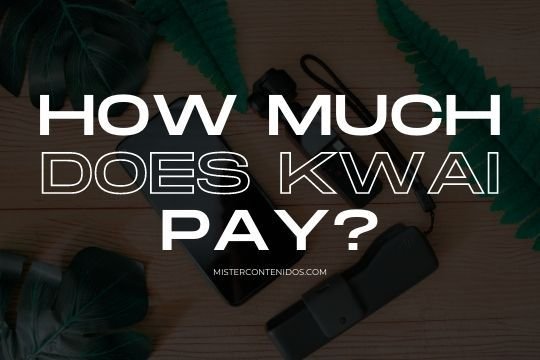Creating data-driven content means using information and analysis to decide what content to produce and how to distribute it. Instead of relying on assumptions, you use concrete data to understand what your audience wants and how to reach them. This approach allows you to create content that truly connects with your audience, improves your visibility on search engines like Google, and helps you achieve your marketing goals more effectively.
In this guide, we’ll introduce key tools (both free and paid) and practical tips to help you transform data into successful, relevant content.
Why Create Data-Driven Content?
Creating data-driven content offers significant advantages for your marketing strategy:
- Connect Better with Your Audience: Data reveals the topics that really interest your audience, their pain points, and what information they actively search for online. This helps you create content that is both useful and valuable.
- Make Strategic Decisions: Using data eliminates guesswork when choosing topics, content formats (articles, videos, infographics), and the best channels for distribution (blog, social media, email).
- Increase Effectiveness: Data-driven content generally addresses proven user needs and interests, which leads to more engagement, traffic, and conversions.
- Optimize for SEO: Data analysis is essential for identifying the right keywords and understanding search trends. This improves your organic ranking on search engines.
- Build Credibility and Authority: Incorporating data, statistics, and studies into your content reinforces your arguments, demonstrates expertise, and builds trust with your audience.
- Measure and Refine Your Strategy: Data allows you to evaluate which content performs best, understand why, and optimize your future efforts for even better results.
- Save Time and Resources: By focusing on topics with proven demand, you avoid wasting effort on content that no one is searching for or needs.
Free Tools for Keyword and Trend Analysis
These tools offer an excellent starting point for researching keywords and trends at no cost.
Pinterest Trends

Pinterest Trends is Pinterest’s official free tool that displays the most popular searches and emerging trends on the platform.
Key Features:
- Compare the popularity of different terms.
- Visualize the popularity of search terms over time.
- Identify seasonal trends and interest peaks.
- Discover related terms and popular searches by niche (fashion, home, food, etc.).
What It’s Used For: It helps you identify visual trends, understand the specific interests of the Pinterest audience, and discover the keywords they use when searching for inspiration and products.
Practical Use: Ideal for generating data-driven content ideas and serving as a visual resource to plan seasonal campaigns and understand what resonates in creative and lifestyle niches.
Price: Free.
Google Trends
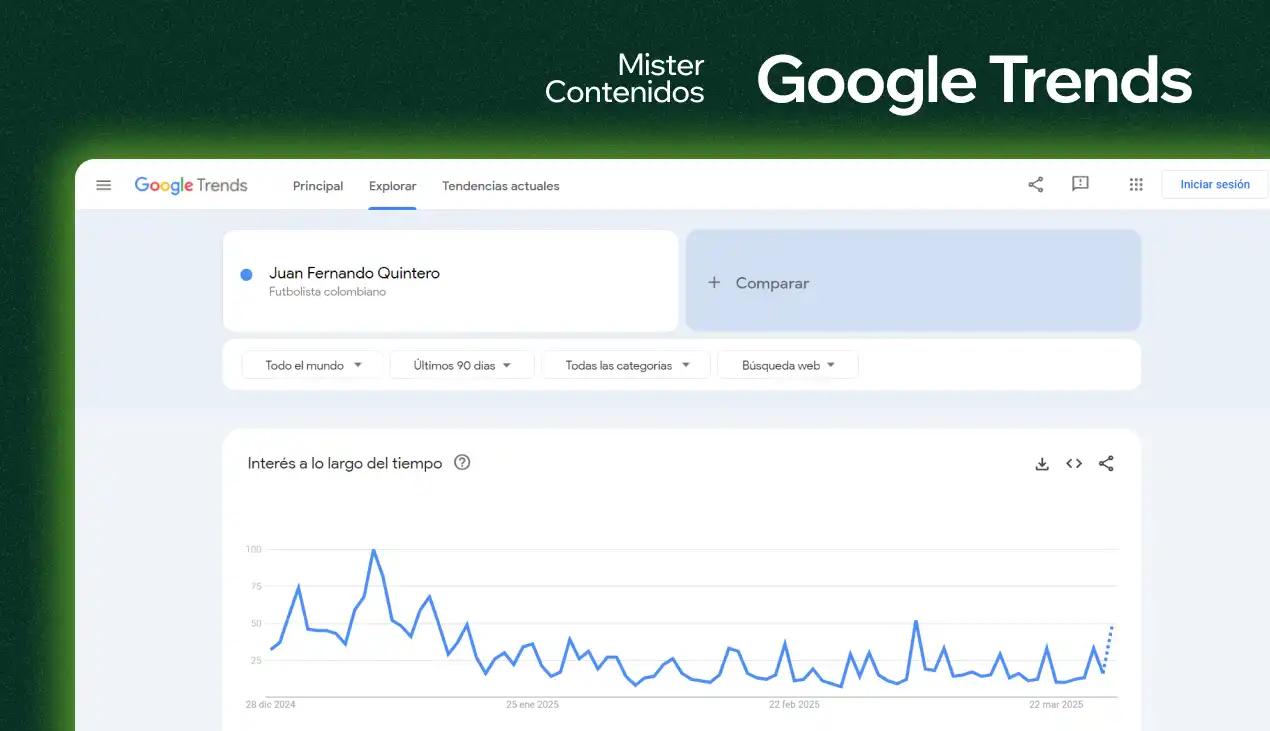
Google Trends is Google’s free tool that lets you explore the popularity of search terms across Google Search, YouTube, News, Images, and Shopping.
Key Features:
- Displays the search interest for a keyword over time (from hours to years).
- Allows you to compare the relative popularity of up to five terms.
- Filters data by geographic region (country, city), time period, and category.
- Identifies rising queries and related topics.
What It’s Used For: It helps you identify the seasonality of topics, validate whether a content idea is currently in demand, find trending topics, and discover related searches to broaden your content.
Practical Use: Essential for planning editorial calendars, finding news angles for your content, validating the demand for a topic before creating it, and understanding the geographic context of interest.
Price: Free. Paid APIs are available via third parties for programmatic data access.
Paid Tools for Keyword and Trend Analysis
These tools offer more advanced functionalities, larger databases, and deeper analysis—ideal for more serious data-driven content strategies.
Semrush
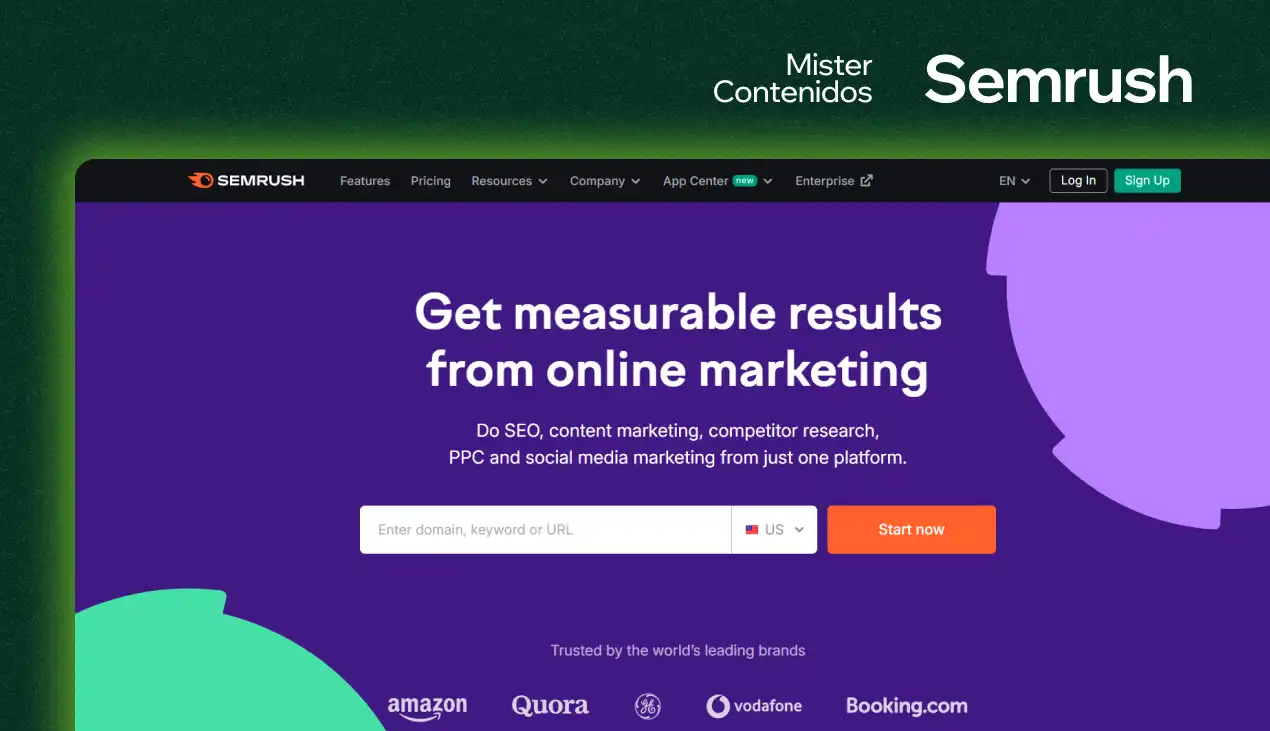
Semrush is an all-in-one digital marketing platform that excels in SEO, content, PPC, and competitor analysis.
Key Features:
- Keyword Magic Tool: An extensive keyword database for research with advanced filtering options.
- Topic Research: Generates ideas for topics and subtopics based on a main keyword.
- SEO Content Template: Provides SEO recommendations for creating optimized content.
- Competitor Analysis: Tools to analyze competitors’ traffic, keywords, and marketing strategies.
- Site Audit: A comprehensive diagnosis of your website’s SEO health.
Practical Use: Ideal for keyword research, generating structured content ideas, performing detailed competitor analysis, and on-page content optimization.
Price: Plans start at $139.95/month (Pro), with options for Guru ($249.95/month) and Business ($499.95/month). Discounts are available for annual payments, and free trials are offered. Additional add-ons for functionalities like Local SEO or Market Trends may incur extra costs.
Ahrefs
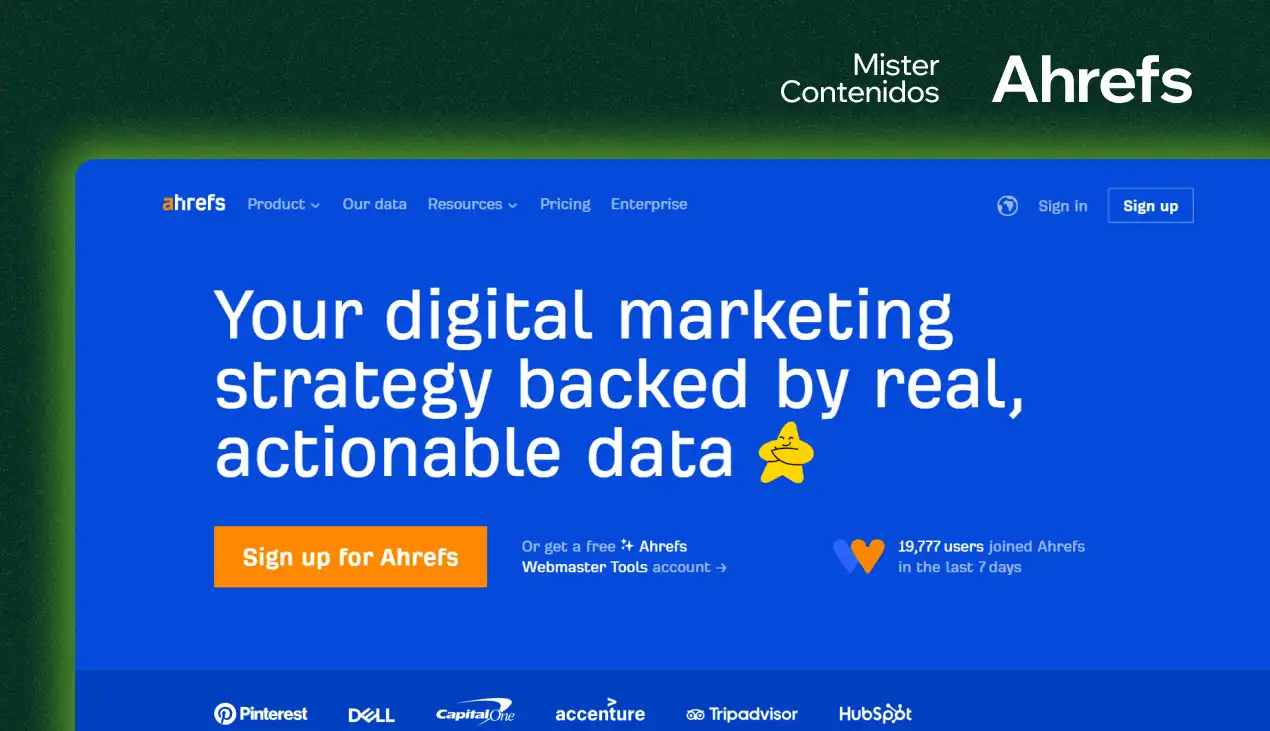
Ahrefs is one of the most comprehensive and well-known SEO suites, used by digital marketing professionals.
Key Features:
- Keywords Explorer: An extensive keyword database with detailed metrics (search volume, difficulty, clicks, traffic potential).
- Site Explorer: In-depth analysis of backlinks, organic traffic, and keywords for any website (including competitors).
- Content Explorer: Discover the most popular content (by traffic, social shares, backlinks) on any topic.
- Site Audit: Crawl your website to identify technical SEO issues.
- Rank Tracker: Monitor your keywords’ rankings in various locations.
Practical Use: Excellent for exhaustive keyword research, competitive analysis (to see what content and keywords work for others), finding backlink opportunities, and optimizing your site’s SEO health.
Price: Plans start at $129/month (Lite) with all features included, with more expensive enterprise options available. There’s also a starter plan at $29/month with limited functionality, which is useful if you’re just beginning.
Keyword Tool

Keyword Tool is a tool specialized in generating thousands of long-tail keyword ideas from various search engines.
Key Features:
- Extracts autocomplete suggestions from Google, YouTube, Bing, Amazon, eBay, Instagram, Twitter, Pinterest, and more.
- Provides data on search volume, trends, CPC, and competition (in the Pro version).
- Filters and organizes keywords by questions, prepositions, etc.
- Allows you to export keyword lists.
Practical Use: Excellent for discovering very specific keyword variations, finding the exact questions people ask, and generating niche content ideas across different platforms.
Price: Offers a limited free version. Pro plans start at $89/month and include more keywords, precise data, and advanced features.
VidIQ

VidIQ is a browser extension and web app designed specifically for growing and optimizing YouTube channels.
Key Features:
- YouTube Keyword Research: Displays search volume, competition, and overall scores for keywords on YouTube.
- Video Analysis: Provides detailed statistics (views per hour, engagement, SEO score) for any video.
- Competitor Tracking: Allows you to monitor the performance of competitor channels.
- AI Content Generator: Suggests video ideas, titles, descriptions, and tags.
- Channel Audit: Reviews your channel and offers optimization recommendations.
Practical Use: Indispensable for YouTubers aiming to improve the discoverability of their videos, understand what works in their niche, optimize titles/descriptions/tags, and analyze competitors.
Price: Offers a free plan with basic features. Paid plans include Boost ($19/month) and Coaching (starting at $199/month), with additional functionalities and limits. A 7-day free trial is available for the most affordable plan, and discounts are offered for annual payments.
AnswerThePublic
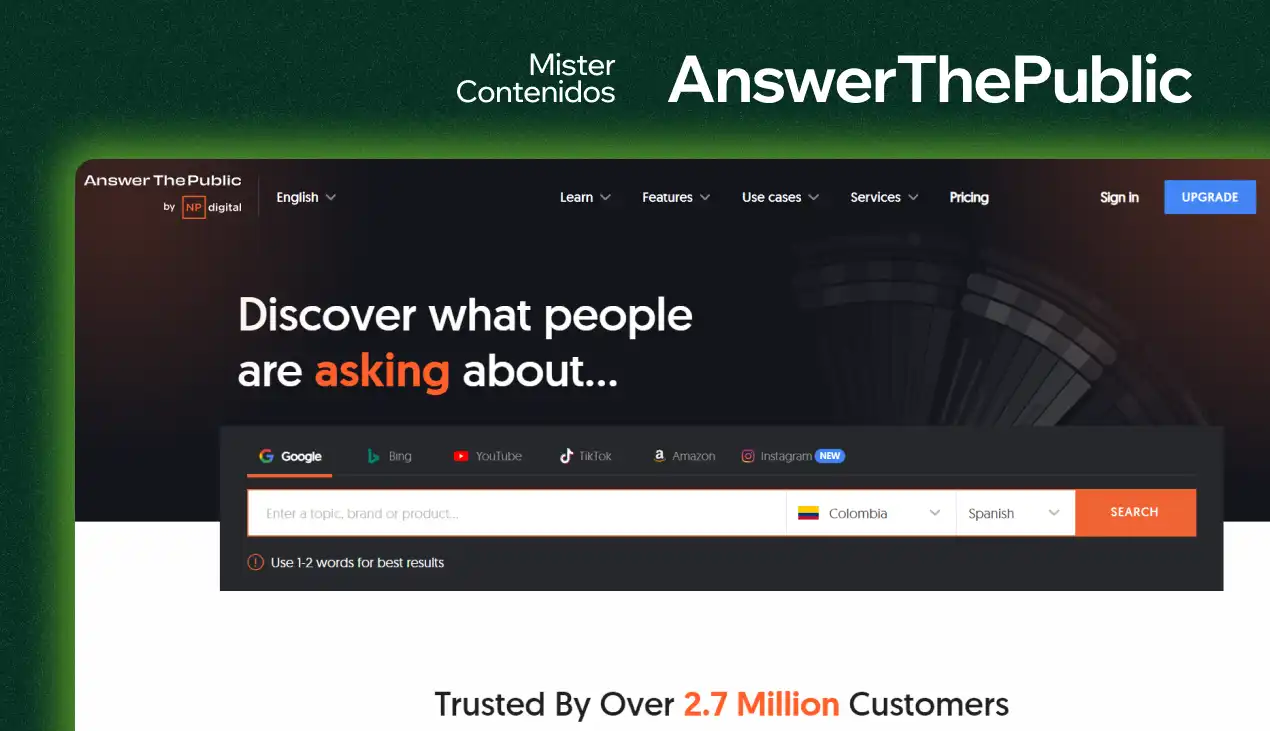
AnswerThePublic is a search listening tool that visualizes the questions, prepositions, comparisons, and alphabetical searches people perform around a keyword.
Key Features:
- Generates visualizations (wheels or lists) of questions (what, how, why, when, who, where).
- Displays searches with prepositions (for, with, without, to), comparisons (vs, or, like), and alphabetical terms.
- Allows filtering by language and region.
- Integrates data on search volume and CPC (in paid plans).
- Offers topic monitoring and alert features (Search Listening).
Practical Use: Fantastic for gaining deep insights into user search intent, generating ideas for FAQs, blog titles, content sections, and structuring comprehensive articles that directly address audience needs.
Price: Offers 3 free searches per day (an account is required). Paid plans start at $5/month (Individual) for additional searches and features such as data comparison and CSV export. The Pro and Expert plans are available at $49/month and $99/month, respectively.
AlsoAsked

AlsoAsked is a tool that extracts and maps out questions from the “People Also Ask” (PAA) or “Other user questions” section from Google search results.
Key Features:
- Visualizes the hierarchical relationships among PAA questions.
- Shows how one question leads to other related questions.
- Allows searches by language and region.
- Exports data in CSV or PNG image formats.
- Offers a “Deep Search” option to explore further levels of questions (available in higher-tier plans).
Practical Use: Very useful for uncovering subtopics and related questions you might not have considered, structuring your content logically, optimizing for featured snippets, and understanding the user’s search journey.
Price: Provides around 3 free searches per month for unregistered users. Paid plans are based on monthly credits: Basic ($15/month for 100 credits), Lite ($29/month for 300 credits), and Pro ($59/month for 1,000 credits).
Practical Tips to Turn Data into Winning Content Ideas
Collecting data is just the beginning. The true value lies in using that data to create content that resonates and performs. Here are some actionable steps to help you through the process:
Identify Relevant Topics and Angles for Your Audience
- Step 1: Research Keywords: Use tools like Semrush, Ahrefs, or Google Keyword Planner to find terms your audience is searching for. Pay attention to search volume and difficulty.
- Step 2: Explore Questions: Use AnswerThePublic and AlsoAsked to uncover the exact questions people have about your main topics.
- Step 3: Analyze Trends: Check Google Trends and Pinterest Trends to see which topics are gaining popularity or are seasonally relevant.
- Step 4: Listen to Your Audience: Review blog comments, social media interactions, customer emails, and industry forums. Note recurring questions and topics.
- Step 5: Analyze the Competition: Use Ahrefs or Semrush to examine which content is performing best for your competitors (the content that generates the most traffic or backlinks). Identify content gaps—topics they cover that you don’t.
Validate Content Ideas Before Creation
- Check the Demand: Before investing time, verify the search volume of the primary keywords related to your idea. A very low volume may indicate little interest—though in niche topics, it can sometimes be a hidden gem.
- Confirm Timeliness: Use Google Trends to check if interest in your topic is declining significantly. A sharp decline may signal diminishing demand, suggesting it might be wise to choose another topic. However, make an exception for seasonal topics, such as those related to Halloween or Christmas. In these cases, Google Trends is handy in pinpointing exactly when interest starts rising, allowing you to plan your publication just before or during that peak. For example, creating Christmas content in March would be ineffective because public interest is minimal at that time—it’s crucial to publish when your audience is actively searching.
- Evaluate the Competition: Search for your topic on Google. Who is ranking? What type of content are they offering? Ask yourself: Can I create something significantly better, more comprehensive, more updated, or with a unique perspective?
Optimize Titles and Descriptions for Search Engines
- Include the Main Keyword: Ensure your primary target keyword appears naturally in your title (preferably at the beginning) and in your meta description.
- Be Clear and Compelling: Your title should accurately reflect the content while sparking curiosity. The description should succinctly summarize the value of the content and encourage clicks.
- Use Questions or Numbers: Titles like “How to Do X?” or “10 Tips for Y” tend to perform well because they directly address a need or promise structured information.
- Consider Search Intent: Determine whether the user is looking for information, a guide, a comparison, or to purchase something. Ensure your title and description align with that intent.
Create Content Calendars Based on Trends and Demand
- Identify Seasonal Peaks: Use Google Trends to determine when interest in topics related to holidays, seasons, or annual events (e.g., “Christmas gift ideas”, “tax filing tips”) spikes.
- Plan in Advance: Schedule the creation and publication of seasonal content weeks or even months before the peak interest so it has time to be indexed and gain traction.
- Capitalize on Emerging Trends: Monitor Google Trends, Twitter, and industry news for current topics. Publishing timely content about a relevant trend can generate substantial short-term traffic.
- Balance with Evergreen Content: Combine trend-driven content with evergreen content (timeless and always relevant, such as comprehensive guides or essential tutorials) to ensure a steady flow of traffic beyond seasonal peaks.
Recommended Tools by Platform/Purpose
| Platform | Recommended Tools | Key Benefits |
|---|---|---|
| YouTube | VidIQ, AnswerThePublic, AlsoAsked | VidIQ: YouTube keyword research, video analysis, and SEO optimization specific to videos. AnswerThePublic/AlsoAsked: Uncover exact questions to spark video ideas (tutorials, FAQs). |
| Instagram and Facebook | Pinterest Trends, Keyword Tool | Pinterest Trends: Identify visual trends and lifestyle themes. Keyword Tool: Discover popular topics (via Google) and related terms. |
| LinkedIn and Twitter | Semrush, Ahrefs, Google Trends | Semrush/Ahrefs: Research B2B topics and analyze competitors. Google Trends: Spot current news and discussions. |
| SEO (General Optimization) | Semrush, Ahrefs, AnswerThePublic, Pinterest Trends | Semrush/Ahrefs: Deep keyword, backlink, and competitor analysis. AnswerThePublic: Understand user intent and optimize for questions. Pinterest Trends: Discover visual SEO opportunities. |
In Summary…
Adopting a data-driven content approach transforms your marketing from being based on assumptions to one that is informed and effective. By leveraging the right tools (free ones like Google Trends or Pinterest Trends, or paid ones like Semrush and Ahrefs) to research keywords, analyze trends, and understand your audience, you can make smarter decisions.
To get started in an actionable way:
- Choose a Tool: Start with Google Trends or Pinterest Trends if you’re on a tight budget.
- Research a Core Topic: Identify a central theme within your business by exploring related keywords.
- Analyze the Data: Determine what questions people are asking, identify seasonal trends, and pinpoint what your customers are seeking.
- Generate a Specific Content Idea: Base your idea on a concrete data point—such as a popular question or a rising trend.
- Create and Optimize: Develop that content using the keywords and angles you’ve discovered.
- Measure the Results: Track traffic and engagement, then adjust your strategy accordingly.
This process enables you to create data-driven content that truly resonates, boosts your visibility, and contributes to your business goals in a measurable way.
You might also be interested in:







